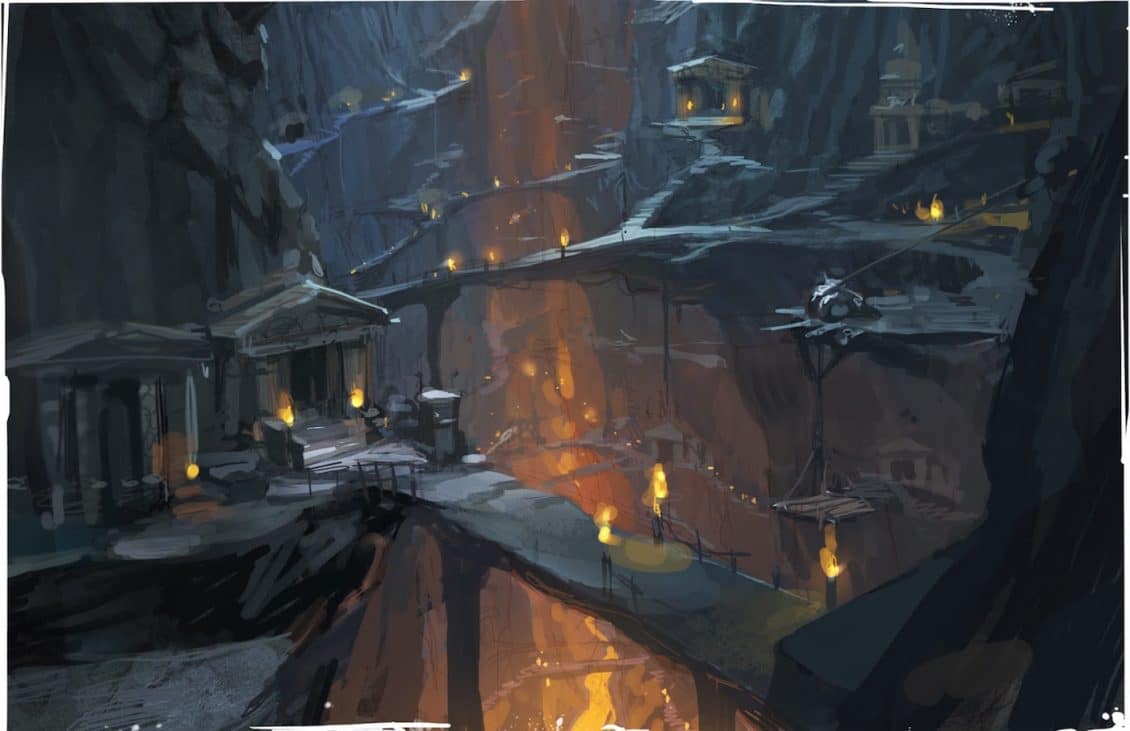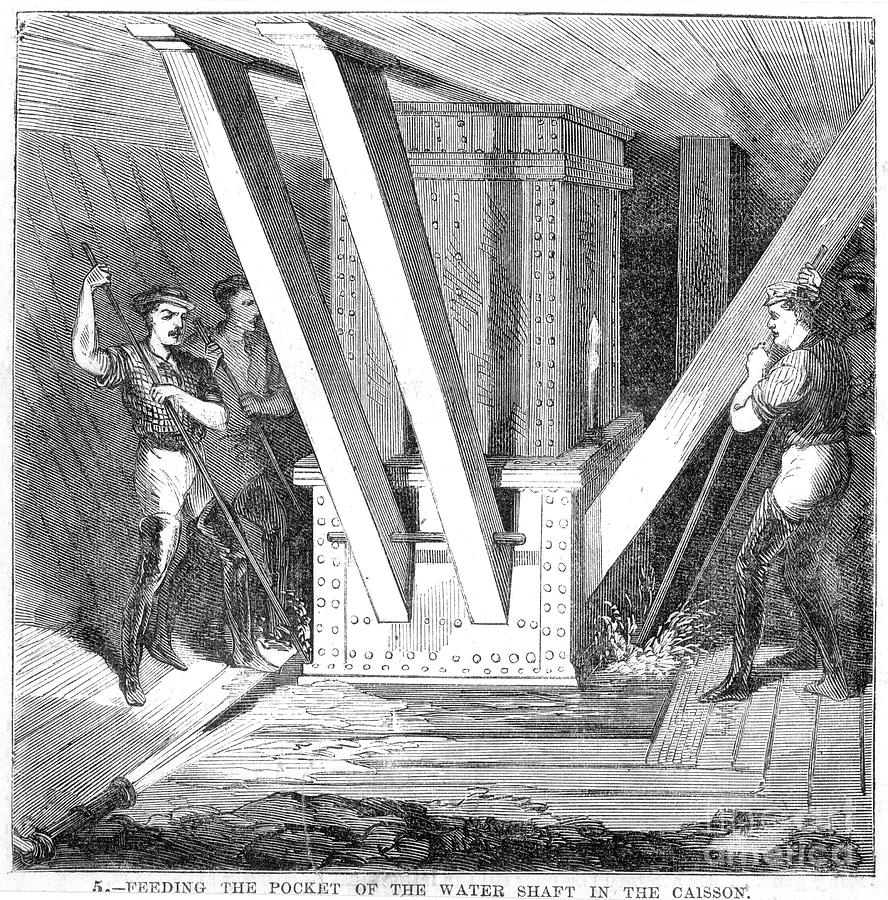Turn the water on in your bathtub. Then grab a glass from your cupboard. Fill the glass upside down and push it to the bottom of your tub. Air is in the glass, so the water in the tub can’t get inside.
You’ve made a diving bell.
Now imagine there are wee little creatures in that glass, all with with wee little picks and wee little shovels, and they are chipping away at the porcelain of your tub. Now imagine those wee little creatures are…well, still wee, but stand taller at 4ft, exactly the size of an average dwarf in Dungeons and Dragons.
Through books like Lord of the Rings, movies like Snow White, and games like Dungeons and Dragons, dwarves are a part of our culture now. When someone says dwarf, our minds immediately catalogue the characteristics of these humanoids, despite them being entirely fictional. But it’s like we know dwarves, understand them, and it’s just a matter of time before we meet one and our swept away on a journey to kill a dragon.

Dwarves are engineers, great builders. Everyone knows that. They carve out great cities and fortresses beneath the mountains. But how? Seriously. How do dwarves carve out great cities beneath the mountains? Do they have a bulldozer or something?
Let’s go back to the experiment in your bathtub. Eventually the air will run out on these wee little creatures, so you’ll need a tube to extend out above the surface of the water to let the bad air out and let the good air in, because you have wee little creatures digging in the bottom of your tub for some reason.
Then you’ll need a tube to let the wee workers get in and out of your air-filled chamber, because there are labor laws for wee little creatures evidently. Finally, you’ll want to add a third tube to expel the porcelain that has been chipped away from the bottom of your tub, because the waste has to go somewhere.
You’ve built yourself a caisson, something fancier than a diving bell, and one of the true engineering marvels of previous centuries. Now imagine your caisson is full-sized and was built in 1870, which isn’t hard to imagine, because that is what really happened.
Just like you may have wondered how dwarves built their magnificent cities without machinery, you may have wondered how our forefathers built wonders like the Brooklyn Bridge, with its hundred foot towers that extend deep into the East River.
In 1870 immigrants to New York would open a hatch and descend one by one into a hole, iron rungs of a ladder beneath their boots. They’d cough and they’d curse, then they’d crack jokes in a variety of tongues. You’d need to joke if you were entering a caisson–an iron chamber–and your job was to dig down to the bedrock under New York’s East River, all in order to support the rising towers of the Brooklyn Bridge.
5,000 pounds of pressure pushed on the caisson at the East River’s bottom. The whole thing would be crushed, had it not been for the the pressurized air that was pumped inside to balance out the forces. But you can imagine the havoc this wrecked upon these poor immigrant’s ears, these men who around 150 years ago built one of New York’s iconic structures.
The men would need to be acclimated obviously. But make no mistake, there was pain involved, air pushing hard and excruciating into your ears, and all this long before ibuprofen. And then came the sounds. There was an unrelenting clang of metal on rock as men picked and poked at the river’s bottom. It was a whole other world at the bottom of the East River.
These workers would have been hearty, strong as an ox. Maybe stronger. His lats and shoulders would have been like stone. And these men would have been gruff, the job making them so. Then after a 10 hour shift of swinging a pick axe in a metal cage, I imagine they’d enjoy nothing more than to visit a pub for a well-deserved mug of ale.
Now back to our team of dwarven builders, chipping away deep beneath the mountains only to discover an underground lake or a chamber flooded with water. Digging under water is no joke.
Maybe the dwarves would consult with their sverfleblin neighbors, great builders in their own right. Or maybe they dared ask the Derro what to do, although they know those crazies can’t be trusted.
Well, they certainly can’t ask an elf! They’ve never trusted elves. Besides, even elven wizards and their magic don’t understand the way things work deep beneath the earth.
No, none of that will do. So I can imagine the dwarves building a caisson. Because no one engineers quite like a dwarf, and no one digs quite like a dwarf. There is no more magnificent a structure than one engineered by dwarves.
I like my role playing games to have a pinch of history to them, so it’s not hard for me to imagine those immigrant workers from 1870, then to imagine a bunch of dwarves from Dungeons and Dragons, who I’m imagining engineered in much the same way. All in order to build their magnificent structures deep beneath the earth.
D&D is filled with magnificent structures, both above the land of the Forgotten Realms, as well as deep below. Too often we jump straight into rolling initiative and don’t properly spare a thought to marvel at what would have been the craftsmanship involved. If a dwarf shows pride in the craftsmanship of his kin, let’s go with it.

History books tell us that in the spring of 1883 there was a parade when they opened the Brooklyn Bridge. It undoubtedly was a magnificent day for those immigrant workers who spent so many days working down in that caisson. Can you imagine the pride they felt to see that bridge completed, to listen to the governor’s speech, to see the children waving their little flags at the parade to celebrate the occasion?
It must have been a marvel at the time. And I can imagine the pride of those men who looked down at the river and knew exactly what lay beneath it.

